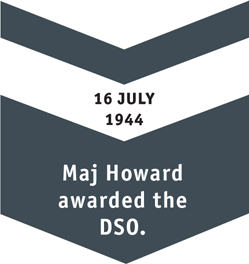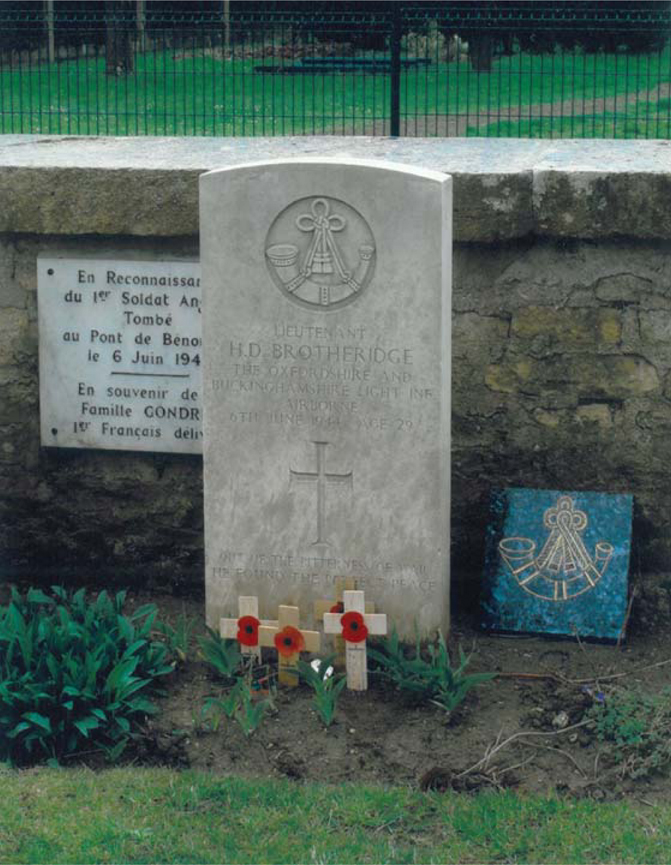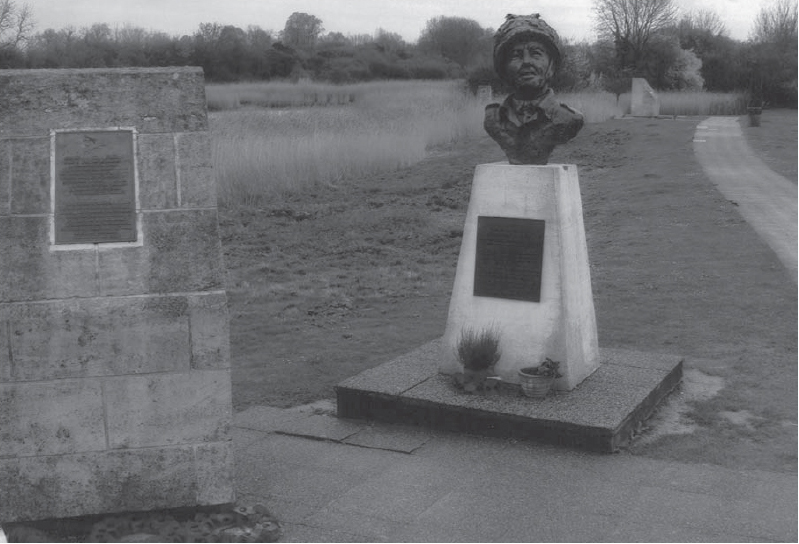
‘Defeat is an orphan,’ according to the proverb, ‘but victory has many fathers.’ In reality, defeat also has numerous parents. The success of Operation Deadstick was the result of many factors.

The greatest luxury that Maj John Howard had was time – time to train his men to a very high standard and remove any who were not up to scratch. Time also allowed the force to develop a strong unit cohesion, and for men to learn the strengths and weaknesses of their comrades.
Howard had a simple and flexible plan that every man could understand and know what his role was. Each glider was a self-contained force with its mix of Sappers and soldiers, so that with every glider that landed on its designated landing zone the chances of success increased. However, Howard had also planned for the possibility of the bridges being blown, and assault boats were stowed in the Horsas.

The grave of Lt ‘Den’ Brotheridge, fatally wounded as he led his platoon across the bridge at Bénouville. The Gondrées added a plaque that explains that Brotheridge was the first Allied soldier to die on D-Day and the distinctive bugle horn is on the right. It is fitting that The Rifles – successors to the Ox and Bucks – have adopted this cap badge. (WF)

LZ-X in 2009. In the foreground is the bust of Maj John Howard with a plinth on the left marking the position where his glider landed. In the background can be seen two plinths where the other Horsas landed. The marshy pond that would claim the life of one of the soldiers is visible in the middle distance. (WF)
The intense and realistic training meant that even though some of the landings – notably that by Chalk 93 – were violent, the men who were uninjured took only a short time before they quickly deployed to their allocated tasks. Men who were less fit and less well-trained would have taken time to recover and orientate themselves; bunched in and around the glider, they would have been an easy target.
The company was sufficiently flexible that when the Ranville Bridge had been secured, 17 Platoon could be redeployed to reinforce the men on the Caen Canal – with the 6th Airborne Division landing, the threat from the east would be greatly reduced.
Howard’s choice of a whistle to blow the Victory V signal might have irritated some of the men, who thought it drew attention to the CO and the men around him, making them a target, but it was simple and proved very effective as a rallying signal for the paratroops.
Even when the platoon commanders and in some cases the sergeants became casualties, the close-knit and well-trained platoons continued to function – a product of good training.
Deadstick was not a typically British airborne operation; in many ways it was in the tradition of the German airborne, in which a direct assault is made on a high-value objective. This may run the risk of higher casualties but ensures that the objective is seized. At Arnhem in September 1944 the indirect approach, with men landing on a safe drop zone away from the objective, would lead to failure. If a coup de main force had seized the Arnhem bridges and held them until the main force arrived, the outcome of Operation Market Garden might have been different.